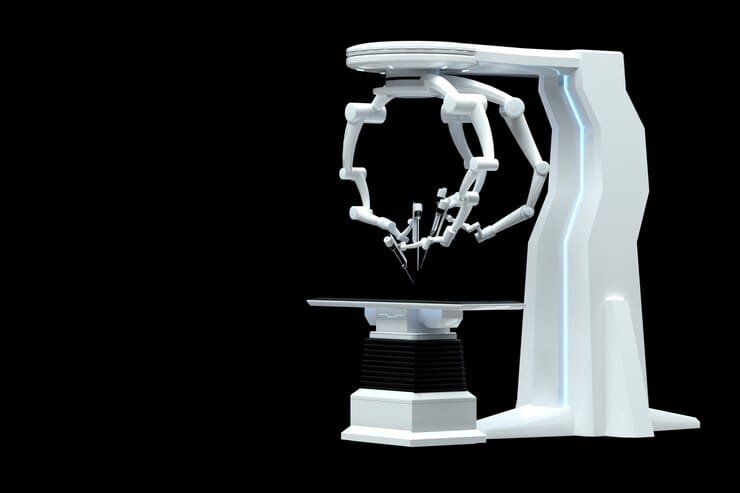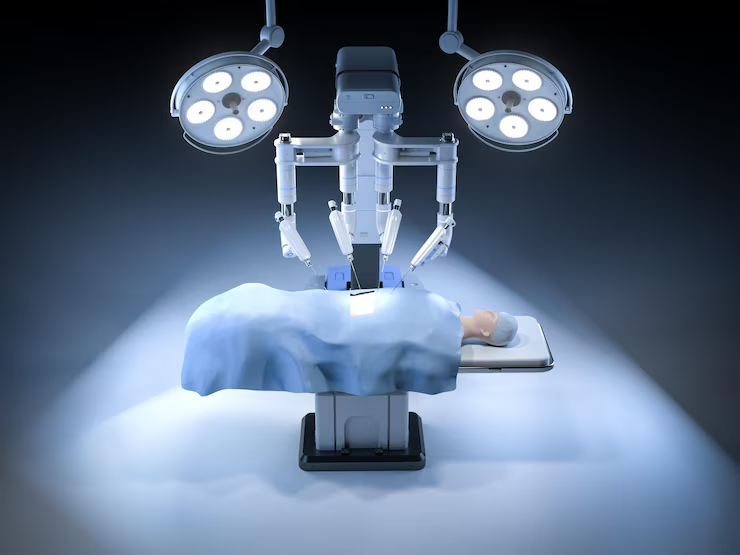Overview: Medical Imaging’s Revolution: Reshaping Healthcare as We Know It
Now-Defunct Medical Imaging Company Portfolio
An enormous revolution is ongoing within the medical imaging industry, powered by improvements in computation, sensor technology and artificial intelligence (AI). Established methods, such as X-ray radiography, Computed Tomography (CT), Magnetic Resonance Imaging (MRI), and Ultrasound (US), are complemented – and, in some instances, confronted – by emerging innovations such as molecular imaging (PET/SPECT) and sophisticated reconstructive algorithms. With increasing demand for higher spatial resolution, faster acquisition times, and lower radiation dose, the medical imaging environment is evolving beyond the capabilities of current hardware and software. To address the emerging challenges of sophisticated data processing pipelines due to the increased use of multi-detector CT arrays and the resulting large datasets requiring reconstruction, the domain of computational imaging continues to advance. As the persistence of image artifacts and noise related to low-dose protocols will call for progressively use of iterative reconstruction algorithms.
Why is Medical Imaging Innovation Important
Medical imaging is an essential component of diagnosis, treatment planning and therapy monitoring in modern medicine. The main goal of medical imaging is to supplement the information from other imaging techniques to improve clinical decision-making and overall healthcare costs; as the precision and accuracy of the current imaging systems directly correlate with patient outcomes. Inside and outside the lab, medical imaging is becoming more important as a tool for personalized medicine and for the development of targeted therapies. Interpreting the minute differences in the architecture of tissue and metabolic activity observed in medical images is vital to customize the treatment to specific patient requirements, enabling a more anticipatory and remedial approach to patient care. Whether it is early-stage disease diagnosis, as in the case of oncological disease or navigation for minimally invasive surgery, the ongoing innovation in medical imaging technologies has a tremendous impact on better patient management and improved overall system efficiency. This has significant implications both for those providing healthcare, as well as manufacturers of medical devices, who will need to constantly adapt, and invest, to stay at the cutting edge of this evolving field.
As the growth factors of Medical Imaging Devices Market are regions and countries, systems and devices, forecast, and forecast by regions and key players.
The medical imaging devices market is a fast-moving landscape that is constantly evolving. I have identified several emerging trends that are reshaping the industry and will require participating companies to adapt their strategies within the industry. We will group these trends and offer you action points.

I. Positive Trends: Driving Growth & Innovation
Trend 1: The Fusion of AI & Machine Learning
- External factors: advancements in deep learning algorithms, availability of more powerful hardware, and access to large datasets are all contributing to the growth of AI. Using AI algorithms, tactics such as image reconstruction, noise removal, image analysis (e.g. lesion detection, segmentation) are automated, allowing more rapid and accurate diagnosis.
- Radiomics, a significant approach, aims to extract a large number of features from radiographic images and correlate them with clinical parameters, thereby enhancing diagnostic precision, optimizing imaging techniques, and reducing the workload of radiologists.
- For instance, GE Healthcare and Siemens Healthineers have integrated AI-powered tools into their MRI and CT scanners, improving diagnostic capabilities and decreasing the time taken for scans.
- Action: Spend heavily on AI/ML R&D, form alliances with the AI start-ups, add AI functionalities to current imaging platforms to create added value offerings and map against competition.
Trend 2: Less invasive & portable imaging:
- Drivers: preference for minimally invasive procedures; high demand for point-of-care diagnostics; and technological advancements related to miniaturization and battery technology.
- And during the country’s pandemic response and recovery, leveraging portable diagnostic imaging would —Impact: Expand diagnostic capabilities beyond hospital settings, enable rapid access of patients to imaging, maximize the comfort of patients receiving imaging, and lower the cost of healthcare.
- Example: A handheld ultrasound device from Butterfly Network is shaking up the ultrasound market by providing inexpensive, portable imaging.
- Actionable Insight: Research and invest in the development of portable, handheld imaging devices and integrated imaging solutions suited for ambulatory / emergency / rural healthcare. Focus on resilient design, connectivity, and preserving data security.
Trend 3: Integration of Advanced Imaging Modalities:
- Enabling Technologies: Photonics, materials science, and computer science. Other rookie modalities emerging like spectral CT, 7T MRI, and multi-parametric imaging are pushing for higher resolution and functional imaging capabilities.
- Impact statement: Improved visualization of anatomy and disease processes and their relationship at cellular and molecular level of disease that aids in early detection of subtle pathologies that would provide increased confidence in pathologic diagnosis.
- For example, spectral CT will allow Philips to better characterize tissue and thus provide extra functional information to allow better cancer staging.
- Take-Away:Invest additionally in the advancement and development of novel imaging modalities as well as clinical validation of these technologies to allow its implementation. Provide extensive image analysis capabilities to extract the complete value from advanced imaging data.
II. Adverse Trends: Posing Challenges & Requiring Adaptation
Trend 1: Growth of Regulatory Scrutiny & Compliance:
- Trends: — Increasing complexity of global medical device regulations, including stringent data privacy requirements.
- Consequence: Higher development costs and timelines, increased risk of non-compliance penalties, and complexities of operating in multiple regulatory environments.
- How to do it: Develop a strong regulatory affairs team, maintain active communication with health authorities, and establish a formal quality systems framework to ensure compliance in all relevant markets. Use rigorous testing and documentation practices.
Trends 2: Price Pressures & Reimbursement Challenges:
- Why it is happening: Cost containment efforts by healthcare providers, increasing competition, and value-based healthcare models are putting pricing and value pressure on device manufacturers.
- This will take its toll on profitability, increasing the pressure on companies to show the clinical and economic advantages of new technologies, and, potentially, slowing the adoption of new products in the market.
- Key Insight: Invest in technologies that have measurable improvement in patient outcomes and a reduction in the overall cost of care. Use health economic models and comparative effectiveness studies as key components of pricing justification. More robust Data – to expand the product portfolio and reduce dependency on single products Sell service and maintenance to provide additional value.
Trend 3: Cybersecurity Threats:
- Underlying Factors: The rising number of connected medical devices and their integration into healthcare IT systems increase vulnerability to cyberattacks.
- Potential Impact: Breach of patient data, disruption of clinical workflows, and possible compromise of the device safety and performance.
- Actionable Insight: Make device design and development cybersecurity top priorities. Use encryption technologies, set up strong access control protections, and periodically scan devices for potential vulnerabilities. Regularly perform security audits and keep proactive threat detection and response measures in place.
Conclusion
The medical imaging devices market presents both exciting opportunities and significant challenges. By strategically capitalizing on positive trends like AI integration and portable devices while mitigating adverse trends like regulatory burdens and cybersecurity risks, companies can achieve sustainable growth and maintain a competitive edge in this transformative industry. This requires a proactive, agile, and adaptable approach.
Certification of Personal Data in the Medical Imaging Industry
Healthcare: MRI scanners are essential in hospitals and diagnostic centers for obtaining non-invasive visualization of soft tissues, facilitating diagnosis of neurological disorders (for example, multiple sclerosis), musculoskeletal injuries (for example, ligament tears), and tumours. CT scanners, or computed tomography (CT) scanners, are X-ray devices that create detailed cross-sectional views of bone structures and internal organs — vital tools in trauma assessment and cancer staging. Additionally, nuclear medicine employs Positron Emission Tomography (PET) scanners (frequently combined with CT to form PET/CT scanners) to detect cellular metabolic activity to detect cancerous growth at the earliest possible moment and also monitor treatment response. Coupled with PACS, these modalities allow image sharing and image analysis — leading to greater efficiency and higher accuracy of diagnosis in the healthcare ecosystem.
Technology & Research: Technology companies are increasingly applying advanced microscopy techniques traditionally used for research, such as confocal microscopy and electron microscopy, in product development. In microelectronics, for example, such methods permit engineers to inspect the sub-micron scale structure of semiconductor chips, an important tool for quality control and failure analysis during fabrication. The pharmaceutical industry benefits from confocal microscopy as it boost drug-delivery visualization at the cellular level, leading to novel therapies. Integrating these techniques with image processing algorithms enables the accurate measurement of even the smallest details, particularly relevant in high-tech industries where minor defects can lead to major complications.
Automotive and Aerospace: These industries rely heavily on non-destructive testing (NDT) via X-ray and ultrasound imaging as a fundamental aspect of quality assurance. Welds.A03: X-rays used for inspecting welds in frames of cars (for porosity and defect) In aerospace, ultrasonic testing is also used to verify conductors, including composite materials of aircraft wings, to identify delimiting and voids, and ensuring the reliable performance. CT scanning allows for the digitization of complex components, meaning that detailed CAD models can be created from existing parts upon which design iteration can be performed, and this goes beyond aerospace; CT is being used not just for normal applications but also things like reverse engineering.
Manufacturing: Industrial CT scanners are used for high-precision measurement of manufactured parts, for defect detection of system components across industries. From checking inspection of injection-molded plastic parts for dimensional accuracy and internal porosity to precision metal components, the systems provide a complete three-dimensional view of manufactured items. These methods directly lead to lowered scrap rates and optimized manufacturing workflows.
Key Strategies in Medical Imaging Devices (2023 Onwards)
Organic Growth Strategies
- Improving AI & Machine Learning Integration: Enhanced integration of AI and machine learning (ML) are among the top focus areas for companies to leverage for superior image analysis, diagnostics accuracy, and workflow efficiency. For example, GE HealthCare has built on its Edison platform to provide AI-enhanced solutions including speedier image reconstruction and aids in diagnosis. This helps radiologists to check for subtle anomalies more rapidly and facilitates quicker patient turnaround times.
- Growth of Cloud-Based Solutions: The migration to cloud-based systems for image storage, processing, and sharing is becoming increasingly popular. For example, Siemens Healthineers is focusing on cloud-based PACS so medical professionals can work together from different locations and access patient data from anywhere.
- Trend 1: Shift towards minimall invasive imaging systems: More recently, we see that various their operations were completed on the patients using minimally invasive surgical techniques. Using MR-guided systems, Canon Medical has improved its interventional imaging systems with updates to navigation and real-time imaging features that let surgeons perform complex procedures more accurately and with less trauma to the patient.
Inorganic Growth Strategies
- Strategic Acquisitions to Broaden Portfolios: Companies are acquiring firms to get access to new technologies or new market segments quickly. One example of this is Philips, which recently acquired a number of AI-based imaging software companies to boost its diagnostics capabilities and market presence.
- Innovative Approach Through Partnerships and Collaborations: A popular approach for fostering innovation is to forge partnerships with tech firms or research institutions, etc. AI startups are also working with companies like Medtronic to incorporate algorithms into imaging devices to facilitate individualized treatment planning. These alliances integrate diverse expertise and accelerate next-gen imaging solution development.
- Invests in Specialty Imaging Modalities: Newer or more specialized imaging modalities (e.g., photon-counting maize, advanced molecular imaging, etc.) are some of the areas where companies are starting to spend. This helps them to set their services apart and meet the increasing need for accurate diagnostic tools, resulting in a niche market segment.

Outlook & Summary: The Next 5-10 Years in Medical Imaging
The next ten years will see a revolution in medical imaging, enabled by artificial intelligence (AI) developments and complex data analytics. You’ll see swift implementation of deep learning algorithms for improved image reconstruction, automated lesion detection, and quantitative analysis, streamlining interpretation and helping detect disease faster and with more accuracy. We will progress beyond the 2D images of each modality to volumetric imaging, with impressive spatial and temporal resolution, which will make oversampling of the imaging volumes in both cardiac and neuroimaging possible. Spectral CT and novel contrast agents are expected to afford greater tissue specificity, enabling more accurate diagnoses at lower radiation doses. Tele-radiology and remote image interpretation outpost will further democratize access to specialized expertise and enhance the efficiency of workflows within hospital systems, particularly in geographically remote systems.
The medical imaging field is one of the most innovative segments of the ongoing development in the wider medical device sphere, impacting areas such as surgical preparations, therapeutic actions or tracking disease progression. The medical device market overall will grow moderately but the imaging subsegment, especially the AI-enabled devices and the advanced software platforms, will outperform because of the lower cost per diagnosis as compared to other therapeutic devices. From a cost reduction model, we expect to see increased penetration of software and AI as an add on to existing imaging systems, reducing the development cost associated with adding new hardware. Reducing to better outcomes and faster throughput, it means economic and clinical value — a major driver for innovation. Finally, the main message of this article is that the future of healthcare is tied closely with the innovations in medical imaging. These technologies will completely transform not only how we diagnose but how we treat and monitor patients, marking a tectonic shift in the delivery of healthcare worldwide.
What are some of the key investments that you are making, as focused organizations, around the expected opportunities, both near-term and longer-term, in the medical imaging space, in the context of a rapidly developing technology landscape and evolving regulatory paradigm, and how are you fully preparing for the inevitable move within the medical device space, as a whole?

